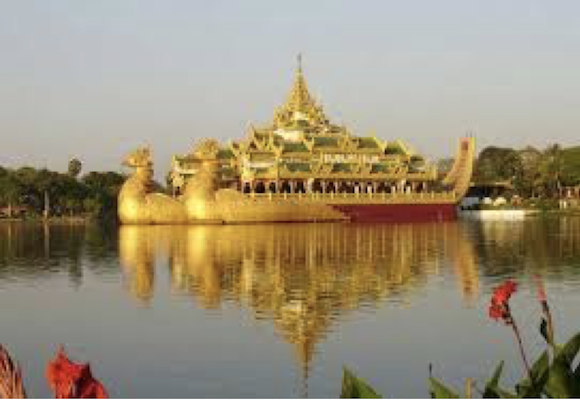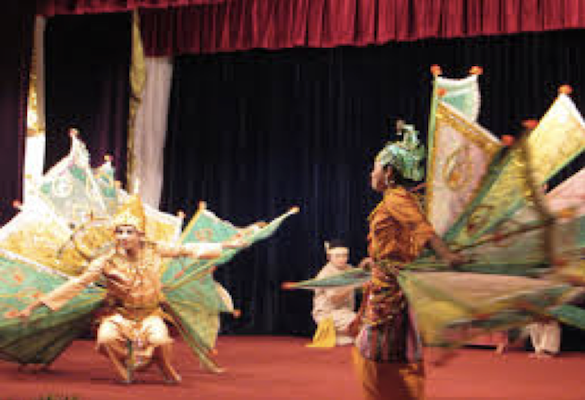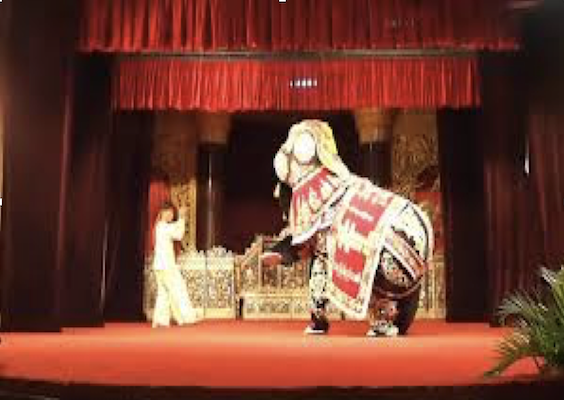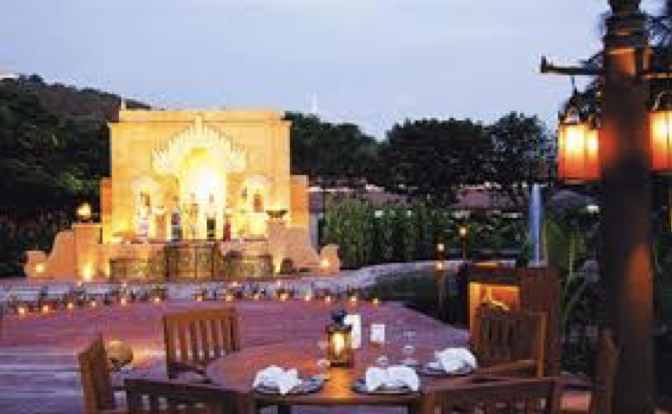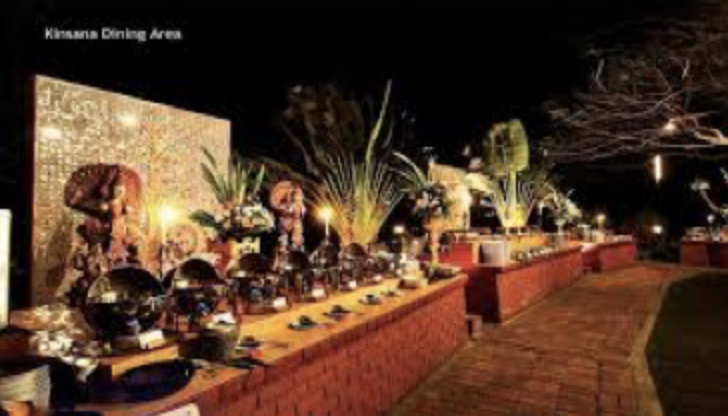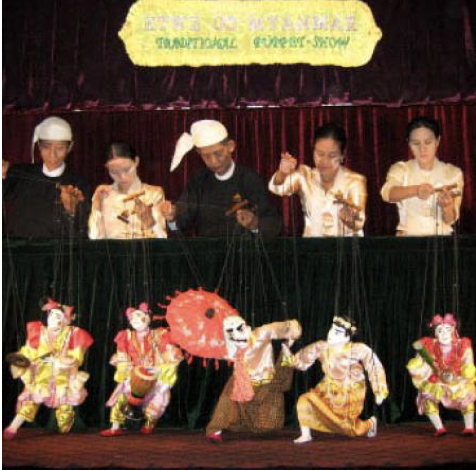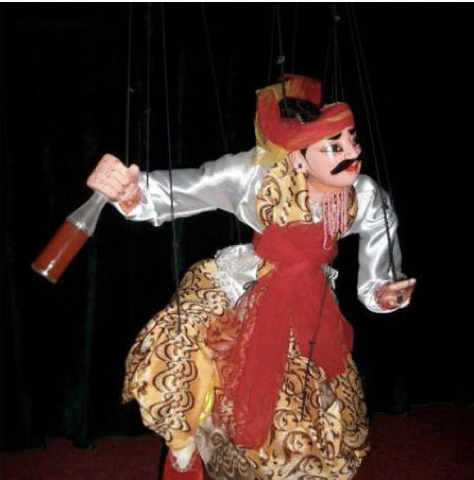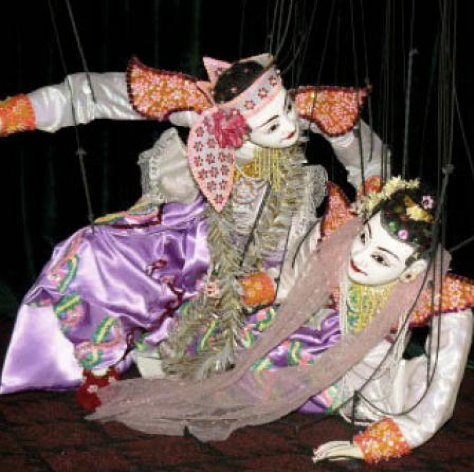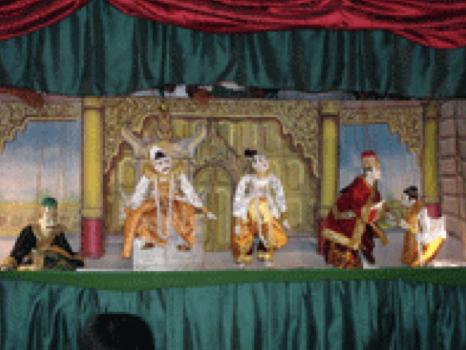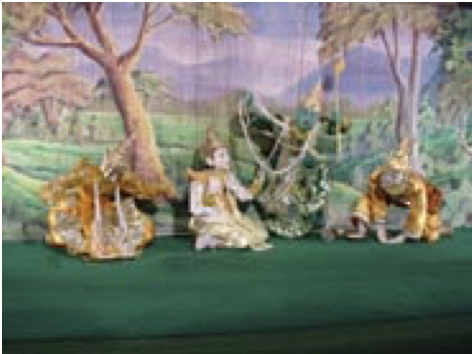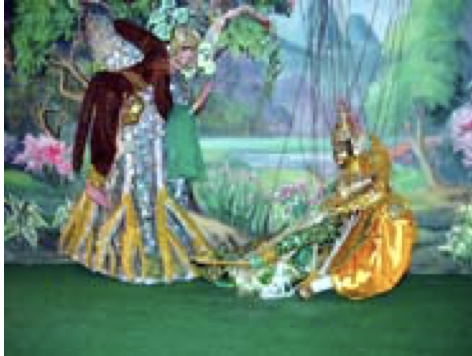Myanmar Travel Tips
ARRIVING IN MYANMAR
BY AIRCRAFT
There are no direct flights from Europe to Myanmar. The most cost-effective way of travelling to Myanmar is either via an airport in the Middle East, for example, via Doha with Qatar Airways, via Dubai with Emirates Airline or via regional hubs such as Bangkok or Singapore.
There are also direct flight connections to Yangon from Beijing, Chiang Mai, Dhaka, Gaya, Guangzhou, Hanoi, Ho Chi Minh City, Hong Kong, Kolkata, Kuala Lumpur, Kunming, Mao Sot, Phnom Penh, Seoul, Taipei and Tokyo.
Please click here to display a list of airlines with offices in Yangon and regular international connections to Myanmar.
OUR TRAVEL TIP
There are also direct flights from Bangkok, Singapore and Kunming to Mandalay International Airport. Some airlines fly to both Yangon and Mandalay. This enables an open-jaw flight, i.e. you fly to Yangon and take your return flight from Mandalay, saving you travel time and cost in Myanmar.
FROM BANGKOK
Bangkok Airways: www.bangkokair.com
FROM SINGAPUR
Singapore Airlines: www.singaporeair.com
FROM KUNMING
China Eastern Airlines: http://en.ceair.com/
AIRLINE TICKETS
You may book your flight through your trusted travel agent at home, via an Internet-based flight provider or directly from the airline. It is usually suggested to buy your tickets 4-5 months in advance. Moreover, you might find it cheaper to book flights during the week rather than the weekend. The best day to check during the week is Tuesday. However, deals can occur at any time and prices can vary, so always keep an eye out and search at different times to find the cheapest flight routes possible.
AIRPORT TRANSFERS
Yangon International Airport is located in Mingaladon, approximately 15 km (9.3 miles) north of Yangon city centre, and is the most important international airport in Myanmar, and the second largest airport in the country. A taxi journey takes approximately one hour from the airport to the city centre. The journey costs 10,000 kyat (US$ 8).
There is also a bus stop right outside the airport. YBS (Yangon Bus Service) is operating from 04:00 to 22:00 for 500 kyats per person. The air-conditioned buses leave every five minutes on a route to Yangon Central Railway Station in downtown. Please make sure that you have exact fare ready when boarding the bus, because drivers don't give change.
Bus stops along the way: Yangon Int’l Airport, 8 Mile Junction, Yangon Hotel, Nawaday Cinema, Kabar Aye Pagoda, Sedona Hotel Yangon, Myanmar Plaza, Melia Hotel Yangon, Excel Hotel, Shwe Gone Dine, Shwedagon Pagoda, Zoological Garden, Parkroyal Hotel Yangon, Thamada Cinema, Sule Shangri-La Yangon, Sule Square, Sule Pagoda and Yangon Central Railway Station.
YBS has also launched an inter-terminal shuttle bus from Terminal 1 (international) to 3 (domestic) from 05:30 to 21:00 leaving about any 15/20 minutes.
Mandalay International Airport is located 45 km south of the city. A taxi journey takes approximately one hour from the airport to the city centre. The journey costs 22,000 kyat or 4,000 kyat for a seat in a shared taxi.
BY LAND
At present tourists can travel freely between Myanmar borders with Thailand and India. For the border crossing point on the Chinese border (at Ruili, Yunnan Province) a permit is required. Entering the country via the border crossing points with Bangladesh is currently not permissible for foreign nationals. And Laos has absolutely no official border crossing point.
Travelers holding a Myanmar eVisa are permitted entry into the country through the Thai-Myanmar border points of Mae Sai/Tachileik, Mae Sot/Myawaddy and Ranong/Kawthaung and through the India-Myanmar border points of Moreh/Tamu and Zokhawthar / Rikhawdar. For other overland border points, you must apply for your visa beforehand.
Exit: You may exit at any of the International Airports and Land Border Checkpoints. Additionally, you may exit at the Htikee Land Border Checkpoint, but not enter from there at this time.
BORDER CROSSING BETWEEN THAILAND AND MYANMAR
MAE SAI / TACHILEIK
The border crossing point at Mae Sai / Tachileik is the gateway to the heart of the Golden Triangle. Foreign nationals are permitted to cross the border and travel by land as far as Kyaing Tong (approx. four hours), which is famed for its natural beauty and the numerous enigmatic tribes.
There are daily flights from Tachileik via Heho (Inle Lake) and Mandalay to Yangon. If you wish to travel on from Tachileik, this is currently your only option, as the road heading west towards Taungyi is not officially open to foreign visitors due to security concerns.
MAE SOT / MYAWADDY
The border crossing point at Mae Sot / Myawaddy opens up new possibilities to discover the southern region of Myanmar (Hpa-an, Mawlamyine and Kyaikhtiyo). There are direct flights daily and regular bus connections from Bangkok and Chiang Mai to Mae Sot.
The border is situated approximately 1 km from Myawaddy bus station in Myanmar, and 5 km from the city of Mae Sot on the Thai side of the border. Buses depart from Myawaddy bus station on a daily basis, heading for Hpa-an, Mawlamyine and Yangon.
PHU NAM RON / HTEE KHEE
This remote border crossing enables entry into the country between Phunaron (Phu Nam Ron) (Thailand - next city is Kanchanaburi) and Htee Kee (Myanmar, Tanintharyi division - next city is Dawei).
The borders of Thailand and Myanmar are separated by a six kilometre wide no man's land. You can take a motorbike taxi (approx. 100 baht) or try to hitch-hike between these two points (in both directions).
The journey to Dawei or the beach in Maungmagan takes approximately five hours. The majority of minivans travel on a daily basis in both directions and cost approx. 30,000 kyat (US$ 25) per person. The route mostly follows a wide four-lane, crushed stone road, which follows the Tanintharyi River through untouched jungle (please note, however, that the road can also be impassable during the monsoon season).
RANONG / KAWTHAUNG
The southernmost region is the most straightforward way of entering Myanmar. There are regular longtail boat trips between Ranong and Kawthaung, with the journey taking approx. 25 minutes and costing around 100 baht (US$ 3) per person. After arriving in Kawthaung, you walk for 100 m along the coast to the immigration authorities for official entry into the country. There is a KBZ bank in Kawthaung, which has an ATM and offers a currency exchange service.
Kawthaung is the starting point for cruises to the Mergui Archipelago.
Click here for more information
There are many buses that run from Kawthaung to Myeik and beyond that to Dawei. There are daily flights available from Kawthaung to Yangon, via Myeik and Dawe.
BORDER CROSSING BETWEEN MYANMAR AND INDIA
There are two open borders connecting India and Myanmar. The first gate (Moreh/Tamu) located in upper Sagaing region and the second gate (Zokhawthar/Rikhawdar) in Falam District in Chin State. Foreigners can cross these borders with simply passport and valid visa. Travel in these border regions is also unrestricted.
MOREH / TAMU
It’s a 15 minute drive between the borders of India and Myanmar. A taxi costs approx. US$ 3.
From Tamu to Kalaymyo it takes approx. 6 hours. There are daily minibuses, price 6.000 Kyat (US$ 5) or you rent a 4x4 for 30.000 Kyat (US$ 25). From Kalaymyo there are several flights a week to Mandalay and Yangon. There are also daily buses to Mandalay or you can drive to Kalewa (approx. 2 hours) and take the express boat to Chindwin River down to Monywa.
ZOKHAWTHAR / RIKHAWDAR
Tiau, the small border town is a good starting point to explore the northern Chin State. Check with the people from the Rhi Shwe Pyi Guest House for the latest news. The small guest house is only a five minute walk away from the Myanmar immigration office. From Tiau there are daily minibuses to Tedim and Kalaymyo. To Tedim it is a three hour drive, price 8,000 Kyat (US$ 5.5) and to Kalaymyo a seven hour drive, price 15,000 Kyat (US$ 12.5).
VISA AND EMBASSIES
VISA
All international visitors to Myanmar require a passport with a minimum validity of at least six months and a Myanmar visa. Tourist visas are valid for 28 days from date of entry, within three months of issue. You can obtain a visa at any embassy or consulate upon provision of three photos and your passport.
EMBASSIES
Myanmar currently hosts 34 embassies abroad, along with 17 consulates and other representative offices. Please click here to display an up-to-date list of Myanmar embassies and consulates.
VISA ON ARRIVAL
Please note that not all passport holders get their visa on arrival. The latest information you can find on: http://www.mip.gov.mm/on-arrival-visa/
The terms and conditions of the Visa on Arrival are as follows:
- Visa on Arrival is only available at Yangon International Airport, Mandalay International Airport and Nay Pyi Taw International Airport.
- Applicant needs 2 passport pictures using a plain white or off-white background
- Fee for Visa on Arrival (Tourist) is US$ 50 and the duration of stay (in Myanmar) is 30 days.
- The Visa on Arrival will be granted for the tourism purpose only.
- Extension of stays will not be granted.
- Applicant shall abide by the existing laws and rules and regulations of the Republic of the Union of Myanmar.
- Applicant can travel any places except the restricted area for the security reason.
- Concerned Security and Immigration authorities can deny the applicant’s entry into Myanmar.
- Applicant may leave Myanmar from any International Entry/Exit Points of the country.
However, we believe that a visa on arrival can still create frustration and unnecessary waiting time.
Therefore, we recommend everyone to apply a visa online, as it is the most simple and convenient way that allows you to skip queuing up at the visa on arrival desk and go straight to immigration. You have to go online and get your approval.
E-VISUM
The citizens of 100 countries can use the online e-visa system for entering Myanmar at the following air and land ports:
Yangon International Airport
Mandalay International Airport
Naypyidaw International Airport
Mae Sai/Tachileik Border Checkpoint
Mae Sot/Myawaddy Border Checkpoint
Ranong/Kawthaung Border Checkpoint
Moreh/Tamu Border Checkpoint
Zokhawthar/Rikhawdar Border Checkpoint
The letter of approval is valid for up to 90 days from the date of issue.
Price for normal service processing within 3 workdays: US$ 50 per person
Price for express service within 24 hours (also on Weekends and Holidays): US$ 56 per person
For more information please go to: http://evisa.moip.gov.mm/index.aspx
Applying for an e-Visa: http://evisa.moip.gov.mm/NewApplication.aspx#
CUSTOMS
All foreign currencies (above US$ 10,000 per person) must be declared to the Myanmar customs authorities at the airport. All everyday items may be brought into the country, including video cameras, camera apparatus, laptops and mobile telephones. The importing of drugs, weapons and pornographic material is strictly forbidden. The export of antiques from Myanmar is strictly forbidden. Only gemstones and items of jewellery bought from licensed merchants, or from licensed merchants who can issue an export permit, may be taken out of Myanmar. Travellers may import 400 cigarettes or 50 cigars or 250g of tobacco, 2L of alcohol, 150ml of perfume duty-free.
MONEY
The official currency of Myanmar is the kyat (pronounced ‘chat’). Coins and smaller banknotes are no longer in circulation because the kyat has lost so much value in the last decade. The following kyat banknotes are currently in circulation: K 50, K 100, K 200, K 500, K 1,000, K 5,000 and K 10,000.
There are authorised currency exchanges throughout the country and at all national and international airports. Banks and currency exchanges accept US dollars, euros and Singapore dollars.
For information on current exchange rates please go to http://forex.cbm.gov.mm/
When departing the country, please exchange your kyat before you go to the airport as exchange counters at the airport are not always open.
CASH IN US$ OR EURO
In Myanmar, only freshly printed banknotes are accepted, whereby higher denomination banknotes have a better exchange rate.
US dollar banknotes printed before 1996, as well as US$ 100 banknotes with serial numbers beginning with the letters CB, as well as dirty and/or damaged banknotes are not accepted.
ATMs
ATMs have been available in Myanmar since January 2013. The cash machines are mostly located in tourist centres. Credit cards such as MasterCard and Visa are not accepted, along with debit cards (in each case only with your secret PIN). In a single day, you can withdraw three lots of 300,000 kyat without a problem. Each withdrawal incurs a fee of 5,000 kyat (just over US$ 4).
CREDIT CARDS
The banks in Myanmar have a partnership with Visa and MasterCard (and the Chinese company ‘Union Pay’). This means that American Express and other cards are currently not accepted.
Increasing numbers of hotels, restaurants and businesses are accepting credit cards. Please refer to the terms and conditions before using your credit card, as some hotels charge a service fee of up to 8%.
TRAVEL COSTS
Personal expenditure during your trip also depends, of course, on you as a consumer. While a beer at an expensive hotel can cost US$ 7, it is possible to buy it in a restaurant for approximately US$ 2 (or the equivalent value in kyat). In general, the prices in Myanmar are lower. However, if you buy imported products the price levels are comparable with those of Thailand or Western countries. Import taxes are extremely high! As long as you stick to domestic products, you will perhaps pay a fifth of the price!
You should expect to pay between 15 and 25 euros per person per day for food, drink, tips, entrance fees (insofar as these are not included) and souvenirs.
BUDGET
You should budget for approximately US$ 30 per person / per day for your personal expenses, mealtimes (lunch and dinner), drinks and tips if you only eat in local restaurants and approximately US$ 60 per person / per day if you wish to dine in a hotel in the evening.
LUNCH AND DINNER
Local restaurants: Between 4,000 and 10,000 kyat per person
International hotels: Between US$ 15 and US$ 30 per person
DRINKS
Local restaurants:
Mineral water: 300 to 500 kyat
Non-alcoholic drinks: 300 to 700 kyat
Beer: 2,500 to 2,500 kyat
Tea or coffee: 500 kyat
International hotels:
Mineral water: US$ 1 to 2
Non-alcoholic drinks: US$ 3
Beer: US$ 3 to 7
Glass of wine: US$ 4 to 6
Tea or coffee: US$ 3
TIPS
Hotel porter: 1,000 kyat on luggage delivery, and on departure
Official airport porter: 1,000 kyat per item of luggage
Room cleaning/housekeeping: 1,000 kyat per room per night
Restaurants & bars: small changes from the bill up to 1,000 kyat
Driver: US$ 5 or up to US$ 10 if exceptional, per day
Tour guide: US$ 10 or up to US$ 20 if exceptional, per day
WHAT TO BRING
Sun hat, sunglasses, sunscreen for face and body, prescription medication, insect repellent and an umbrella from April to October (to protect against rain and sunshine). An antibiotic ointment for small cuts and scratches, a spare pair of glasses, a small torch and a few additional passport photos.
WHAT CLOTHING YOU SHOULD WEAR
Light, easy-care clothing made from cotton and thin materials is ideal throughout the whole year. Possibly, during the cooler months of the year, you may need a winter pullover or a jacket and socks when visiting inland, especially around the Inle Lake and Kalaw, as temperatures there can drop to freezing point at night. Please wear sensible walking shoes, which can be easily removed, if necessary. You must remove your shoes when visiting the pagodas and monasteries, meaning it is advisable to take a pair of sandals with you.
PLEASE NOTE
Short trousers, short skirts or revealing clothing are not appropriate, particularly when visiting temples or other religious sites. Myanmar has a conservative Buddhist culture and inappropriate clothing can cause tension. Please select your clothing with respect for the native culture.
GIFTS
Children are always happy to receive notebooks, drawing books, pencils, crayons, but also toys. Please give the gifts to the children only in the presence of the parents, best of all, give them to the children via the parents.
Please do not give sweets or money to the children.
In some places (for example in Mingun), many children do not go to school at all, because they often get more money from the tourists than that of their parents’ daily wage.
Adults can be made happy with a lighter, flashlight, pocketknife, but also with a blanket or mosquito net.
These things can be bought cheaply here at the markets. Our guides are happy to help you here.
IMPORTANT NOT REGARDING DOMESTIC FLIGHT BAGGAGE ALLOWANCE
The airlines carry a certain amount of checked bags (“luggage”) and hand luggage, free of charge.
One item of checked luggage up to 20kg
One item of hand luggage up to 8kg
A fee of maximum US$ 3 per kg is charged for excess luggage but most of the time, if it is only 2 or 3 kilograms extra, the airline waves this fee.
BUSINESS HOURS AND PUBLIC HOLIDAYS
Government offices are open on workdays from 10:00hrs to 16:00hrs. The bank opening times are from 10:00hrs to 14:00hrs. Private businesses are open daily, except for Sundays and public holidays. Shopping centres and supermarkets are open daily. The most famous Bogyoke (Scott) market is open daily from 10:00hrs to 16:00hrs (except for Mondays and public holidays).
PUBLIC HOLIDAYS (2020):
1 JAN New Year Day
4 JAN Independence Day
6 JAN Replace of Independence Day
12 FEB Union Day
2 MARCH Peasants’ Day
9 MARCH Tabaung Full Moon
27 MARCH Armed Forces Day
12 - 16 APR Thingyan Festival (Water Festival)
17 APR Myanmar New Year
1 MAY Labour Day (May Day)
6 MAY Kason Full Moon
19 JULY Martyrs’ Day
20 JULY Replace of Martyrs’ Day
3 AUG Start of Buddhist Lent (Waso Full Moon)
29 - 31 OCT End of Buddhist Lent (Thadingyut Festival of Lights)
1 – 2 NOV Thadingyut Holiday
27 - 30 NOV Tazaungdaing Festival of Lights
9 DEC National Day
25 DEC Christmas Day
31 DEC New Year Holiday Day
When a public holiday falls on a weekend the following day will be a public holiday.
TRADITIONAL FESTIVALS
Myanmar is a country of festivals: A festival for every month of the year. The majority of these are cultural and religious festivals. A large proportion are celebrated across the country, while a few are only regional. The dates of the festivals and the special events are determined by the lunar calendar.
POSTAL SERVICE AND TELECOMMUNICATIONS
The Postal Service in Myanmar is relatively reliable. Letters and postcards mostly reach Europe after approximately two weeks, if sent from Yangon or Mandalay. Postal items sent from the provinces also arrive in Europe after approximately three weeks. A postcard costs approximately 2.000 kyat (approx. 1.20 euro). Many hotels take receipt of postcards and dispatch these for you. It is, however, more reliable to go to the post office in person.
Parcels can also be sent and received in Myanmar but, on the other hand, this is quite time-consuming, particularly when collecting a package from the international post office. Be sure to bring plenty of time and patience! Private providers such as DHL have their price, but deliver a good service. Bulky and heavy items can either be sent home by air or sea freight.
The address for the central post office of Yangon is: No. 39, Bo Aung Kyaw Street. All post offices in Myanmar are open Monday to Friday, from 09:30hrs to 16:30hrs. The majority of hotels have a post-box and stamps can be bought from reception.
International calls can be made from large hotels and central telecommunications centres in the larger cities. It is important to enquire about the price before making any telephone call from Myanmar, as some hotels charge twice the official price. Although the service is improving, the connections are still bad and international phone calls are expensive. The internet is available at various locations across the country.
PREPAID SIM CARDS
For a long time, SIM cards were expensive and difficult to get hold of in Myanmar. Now the cards, which are sold by the network providers Ooredoo (Qatar Telecom), Telenor and MPT (Myanmar Post & Telecommunications), are available everywhere at an affordable price of 1,500 kyat. There are cards for buying phone credit for 1,000, 3,000, 5,000 and 10,000 kyat.
SIM cards and phone credit can be bought at numerous retailers in Yangon and Mandalay, as well as at Yangon International Airport and in the larger cities and tourist attractions. Shops offering SIM cards normally carry the Ooredoo, Telenor or MPT logos.
TELENOR
Local calls cost 25 kyat per minute and international calls (e.g. to Europe) 600 kyat per minute. Receiving calls is free.
Sending a text message costs 30 kyat per text message. Receiving text messages is free.
You can use the Telenor network in Yangon, Mandalay, Naypyitaw, Taunggyi, Pyin Oo Lwin, Mawlamyine, Ayarwaddy-Division, Bago, Pyay, Sagaing, Magwe, Lashio, Bagan and Myitkyina.
www.telenor.com.mm
OOREDOO (QATAR TELECOM)
Local calls cost 25 kyat per minute and international calls (e.g. to Europe) 750 kyat per minute. Receiving calls is free.
Sending a text message within the country costs 15 kyat per text message, whilst international text messages cost 125 kyat per text message. Receiving text messages is free.
You can use the Ooredoo network in Yangon, Mandalay, Naypyitaw, Taunggyi, Pyin Oo Lwin, Mawlamyine, Ayarwaddy-Division, Bago, Pyay, Sagaing, Magwe, Lashio and Bagan.
www.ooredoo.com.mm
MPT
MPT offers a nationwide mobile phone network. Local calls cost 50 kyat per minute and international calls (e.g. to Europe) 989 kyat per minute, receiving calls is free.
Sending a text message within Myanmar is charged at 25 kyat per minute, whilst international text messages cost 400 kyat per text message. Receiving text messages is free.
www.mpt.com.mm/en
TIME
Myanmar has its own time zone, the Myanmar Standard Time. The differences between the individual time zones are stated in relation to ‘Universal Time Coordinated’ (UTC) that being the time used at the prime meridian (zero degrees longitude). Germany's lies in the UTC +1 time zone, whilst Myanmar observes the UTC +6:30 time zone.
The time difference in relation to Germany is +5 hours and 30 minutes according to Central European Time, and +4 hours and 30 minutes during European summertime.
ELECTRICITY
The voltage in Myanmar is 220 to 230 V: alternating current 50 Hz. However, current fluctuations and power cuts throughout the country are more the rule than the exception. In remote regions and basic hotels, electricity is frequently only available at certain times. Higher quality hotels have their own generators.
There is also a ‘perplexing’ variety of different plugs and plug sockets in the country. Extension cables for three types of plug are the norm. As in England, the majority of wall plug sockets have three contacts, which form a triangle. Some sockets also have round plugs or a combination of round/flat holes for both types. It is recommended that you bring an international adaptor with you. However, you will find what you need in every street shop if needed - this problem is all too common here.
BOOKSHOP
In Yangon, we recommend the fabulous little ‘Pagan Book House’, house number 100 on Street 37, between Maha Bandoola Street and Merchant Street. Since his father U Ba Kyi died (who founded the business in 1997), his son, U Htay Aung, and his wife now run this famous ‘old-fashioned style’ bookshop. Here you will find a mixture of local language books and English books (fiction and non-fiction) including some old additions, which used to belong to U Ba Kyi.
This is the best place in Yangon to buy books about Myanmar and Southeast Asia. U Htay Aung is always ready to give helpful tips.
MEDIA
Myanmar is currently undergoing significant changes. Since a new government took office on 30 March 2011, a noticeable process of democratisation has taken place after five decades of authoritarian rule.
The media played an important role in this reform process and will continue to do so in the years preceding the next parliamentary elections in 2015.
The most important characteristic of these changes is the gradual lifting of censorship, which reached its peak in August 2012 with the complete removal of censorship before the publication of an article - a hard-fought victory for journalists, authors and other media representatives. Now articles appear in both private and state-run media, which would have been unthinkable a year ago.
Myanmar newspaper publications, which can also be read online:
MYANMAR TIMES
Bilingual weekly newspaper (English and Burmese) located in Yangon. The newspaper is under the ownership of Myanmar Consolidated Media Co. Ltd.
http://www.mmtimes.com/
MYANMAR BUSINESS TODAY
Bilingual business newspaper publication (English and Burmese). http://mmbiztoday.com/
ELEVEN MYANMAR
The Eleven Media Group was founded by Dr. Than Aung Htut in Yangon, Myanmar in the year 2000. It publishes five weekly newspapers in the Burmese language, which specialise in news and sport. Reporters Without Borders awarded Eleven Myanmar the prize of ‘Media of the Year’ 2011 for its many years of opposition to Myanmar's military rule. The company employs 250 members of staff and, in 2012, sold a total of 450,000 copies of its publications.
http://elevenmyanmar.com/
THE NEW LIGHT OF MYANMAR
TDaily newspaper publication which is published in Yangon, Myanmar. The newspaper, which was founded in 1914, is currently owned by the Ministry of Information, which also publishes the newspaper. http://www.myanmar.com/newspapers/the-new-light-of-myanmar.html
MYANMARS NEWS.NET
With a focus on finance, business, weather, sport, current news, hotels, tourism, airlines and news relating to Myanmar's government. http://www.myanmarnews.net/
RADIO
The official language in Myanmar is Burmese (Bamar), but radio stations also broadcast programmes in English and regional languages.
The English-language radio broadcasters are Mandalay FM, Yangon City FM, Radio Myanmar (MTRD) and Radio Myanmar.
TELEVISION
MRTV Multiplex offers several channels such as MRTV, SkyNet and Hluttaw Channel. MRTV is planning a modern news format with outside contributions and a well-designed news studio. The broadcasting time was also increased to 18 hours (previously 10 hours).
MYANMAR TV (MRTV)
Myanmar Radio and Television, formerly Burma Broadcasting Service (BBS), is the parent company of the state-run Myanmar Radio National Service and a TV station. The TV station is broadcast from the broadcasting centre in Kamayut, Yangon. Radio programmes are now primarily broadcast from Naypyidaw.
MYANMAR INTERNATIONAL TV
Myanmar International TV is a state-owned national and international English-language television channel which was started in August 2001 and renamed Myanmar International Television in April 2010..
MYAWADDY TV
A Myanmar TV network under the ownership of the military. Its programmes also broadcast via the AsiaSat 2 satellites.
TV5
The pay-TV channel TV5 is a joint project between the state and private enterprise.
SKYNET
SkyNet is a provider of satellite television on a pay-TV basis. The channels can be received across Myanmar, and are provided by Shwe Than Lwin Media Co., Ltd. Broadcasting started in November 2010. SkyNet broadcasts a total of 75 SD channels and 5 HD channels via Apstar 7 satellites. It also provides internet services in the Asia-Pacific region.
As the operator of satellite pay-TV services, the range of programmes offered by SkyNet includes extensive coverage of the major football competitions.
FILM AND PHOTOGRAPHY:
Myanmar is a beautiful country, rich in culture and wonderful landscapes. Bringing a digital camera and/or video camera to Myanmar is not a problem at all. A plug socket adaptor is required if you wish to use digital devices. Nowadays, buying photographic equipment in Myanmar is not a problem as there are many shops offering this.
Responsible photography is important, because although there are countless fascinating attractions and people in Myanmar who uphold various customs and traditions, they have a right to be treated as people, in spite of all this exoticism. Please respect their reactions when you unpack your camera and accept that not everyone wishes to be photographed.
A minimal fee is charged for using cameras in many pagodas. This fee is potentially a little higher for video cameras. Some museums place limits on photography.
Important: Photography at airports, train stations and in the vicinity of military installations is forbidden.
HEALTH
VACCINATIONS
No vaccinations are required if you are not arriving from, or travelling through, an infected region. Travellers should bring sufficient medication with them and check the current health recommendations with regard to hepatitis, malaria, typhus etc. before travelling to Myanmar.
HEALTH AND MEDICAL CARE
The much-feared tropical diseases are normally not a threat to tourists, as they mostly occur due to unhygienic conditions, insufficient medical care, poverty and similar factors. Malaria should, however, never be underestimated, although in our experience the areas visited by tourists do not present a significant problem. And the risk of being bitten by poisonous snakes or other dangerous animals should also not be overstated.
On the one hand, coming into contact with poisonous snakes and spiders is seldom and, on the other, they mostly disappear when people approach. We do, however, advise you to steer clear of the many freely roaming dogs and cats. Unfortunately, the quality of medical care leaves quite a bit to be desired. Simple illnesses can be treated by local doctors. Some local pharmacies offer a very comprehensive selection of medicines, mostly sold under English commercial names. It is, however, recommended to bring all medication required on a regular basis and cosmetics in sufficient quantities with you. In case of significant health problems, you should seek treatment in Bangkok or Singapore where there are a large number of good hospitals.
The most common illnesses are, however, the flu and diarrhoea: Even though these cannot be entirely avoided, you can protect yourself by choosing clean and proper foods and avoiding staying too long in air-conditioned rooms.
MONSODIUM GLUTAMAT WARNING (MSG)
Across the whole of Asia including Myanmar, MSG (monosodium glutamate) - known in Myanmar as ‘AJINOMOTO’ - is still used in some restaurants in the preparation of food. Travellers who complain about swollen feet and hands as well as headaches, have most likely consumed a significant portion of MSG in their food. It is best to inform your tour guide when ordering, if you do not wish for it to be used in preparing your food.
Attached is a note in Burmese with which you can kindly ask in restaurants that the food is prepared without glutamate:

DRINKING WATER
We hand out our own refill bottles to all our guests as a gift upon arrival. The vehicles will have water in 10l or 20l tanks on board to supply our guest with water. The water we use is safe to drink and we will try to provide cold water during the day.
PRIVATE HOSPITALS AND CLINICS
Should you become ill in spite of all precautionary measures, the following hospitals are recommended:
INTERNATIONAL SOS CLINIC YANGON
24-hour emergency centre with an international doctor, who can arrange transfers if required. Provides good diagnostic and general surgery services.
Address: Inya Lake Resort, 37 Kaba Aye Pagoda Road
Monday to Friday from 08:30 to 17:30, Saturday from 08:30 to 12:30
Tel.: +95 1 657922
AUSTRALIAN EMBASSY MEDICAL CLINIC AND DENTAL SURGERY
Various general practice medical services by a registered Australian GP. There is a small pharmacy at the clinic. X-ray and pathology services are also available.
Address: Vantage Tower, 623 Pyay Road
Clinic opening hours: Monday to Friday from 08:00 to 16:00
Tel: +95 1 2307410 / 2307425
PUN HLAING INTERNATIONAL HOSPITAL
Address: Pun Hlaing Golf Estate Avenue, Pun Hlaing Street, Industrial Zone (6), Hlaing Thar Yar Township
Mobile: +95 9 421042679
PACIFIC MEDICAL CENTRE & DENTAL SURGERY
Pacific Medical Centre & Dental Surgery
Address: 98A Kaba Aye Pagoda Road, Bahan, Yangon
Clinic opening hours: Daily from 08:00 to 19:00
Tel: +95 1 549152
PHARMACIES
GOLDEN BELL
Address: 006 Yuzana Tower, Shwe Gon Daing Road
Open daily from 08:30 to 21:00
Telephone: +95 1 550213 / 552840
Highly recommended by tourists and foreign nationals
ACCOMMODATION
Popular travel destinations such as Yangon, Mandalay, Inle Lake, Ngapali Beach and Ngwe Saung Beach offer a wide range of accommodation options, including boutique hotels and luxury hotels. At other holiday destinations such as Kalaw, Pindaya, Pyin Oo Lwin, Hsipaw, Kyaikhtiyo (the Golden Rock), Mawlamyine and Hpa-an, there are various beautiful, traditional overnight accommodation options (hotels with 1 to 2 or 3 stars). In other regions of the country, accommodation can be simple and modest.
As a rule, we offer four different hotel categories for our tours: superior, comfort, first class and deluxe.
SUPERIOR ACCOMMODATION
Price range from US$ 40 to US$ 60. All of our hotels fulfil the minimum requirements with regard to cleanliness and comfort. As a rule, all rooms are fitted with air-conditioning and their own bathroom.
COMFORT ACCOMMODATION
Price range from US$ 60 to US$ 100. Hotels in this category place greater value on comfort and service, whereby many have their own in-house restaurant and bar. Porters are often available for carrying luggage. The rooms are normally spacious and furnished with comfortable seating and high-quality bed linen. The bathrooms are often larger, with a bath/shower combination and with an extended washbasin area.
FIRST-CLASS ACCOMMODATION
Price range from US$ 100 to US$ 200. Hotels offer several restaurants, uniformed bellhops and stylish lobbies with a sophisticated interior design and greenery. The majority of accommodation buildings offer a sophisticated level of interior decor, large desks and comfortable chairs, along with TVs housed in cabinets. The room features can potentially include larger bathrooms, spotlights and stone washbasins. Hotels and resorts often have attractive pool areas and small wellness facilities or massage rooms.
DELUXE ACCOMMODATION
The price starts at US$ 200 per night and can rise to as much is US$ 600 for high-end hotels in Yangon, or within the vicinity of popular tourist destinations.
As a rule, the lobbies have a sophisticated decor and several seating areas. The service often includes a concierge, parking service, turndown service upon request and 24-hour room service. The rooms normally offer a number of amenities such as large beds, additional seating areas, minibars, safes for laptops, luxury mattresses, bathrobes and high-quality toiletries. They are sometimes embellished with decorative elements such as decorative trims, bathroom artwork or design accents using granite or marble. Hotels and resorts typically have a comprehensive range of spa facilities, tennis courts, access to golf courses, children's day care services and exclusive pool areas with hospitality.
FOOD AND DRINKS
The food in Myanmar is often sour, spicy, bitter and salty. Such meals normally consist of a range of dishes and sides, and not just a single dish. For example, a mild curry is served with bitter leaves, dried chilli and a salty seasoning such as fish paste.
The country’s typical breakfast is noodle soup such as the national dish , Mohingar (catfish soup with thin rice noodles, onions, lemon grass, garlic, chilli and lime whereby some cooks also add ingredients such as boiled egg, courgette strips and fried bean crackers), Oùn-nó k’auq-s’wèh (chicken coconut soup with noodles, raw onion, coriander and chilli) and Pèh byouq(fried, boiled beans), served with sticky rice or naan bread. All of these dishes are served in tea houses or are available to take away from markets.
Vegetarians should find suitable meals rather easily across the country, especially as some Buddhists apply strict rules to eating meat.
Tap water cannot simply be drunk in Myanmar without further consideration, but bottled water is available across the whole country, and costs approximately 300 kyat. Green tea is served in many restaurants and tea houses, which can be enjoyed without any worry.
Myanmar cuisine uses rice or noodles as a staple, which in the majority of cases is served with a variety of side dishes: curries made with meat or fish, vegetables, salads, soups, spices etc. Burmese curries are typically not as spicy as is normally the case in Thailand. In order to give travellers an insight into the real Myanmar, restaurants and meals are to be chosen carefully from both a hygiene and culinary perspective. The prices for meals and drinks at international hotels are high. There are, however, numerous good local restaurants in which the food and hygiene standards are almost as good as in the hotels, but at more affordable prices.
The majority of hotels in the larger cities serve various dishes originating from Chinese, European, Thai and Indian cuisine. Myanmar dishes are oily, sour, salty and spicy. Moreover, there is a wide variety of local takeaways and delicatessens. Mohingar (thin rice noodles with fish sauce) and Oùn-nó k’auq-s’wèh (noodles with chicken and coconut milk) are the most popular in Myanmar. Shan dishes and delicatessens are also available. Shan cuisine has a great unique taste, and is neither comparable with Burmese, nor with Chinese or Thai cuisines.
ENTERTAINMENT
In Yangon, there are many types of entertainment such as, for example, cultural events, marionette plays, theatre, cinemas and much more. Karaoke is also available in many places.
There are also a number of really good fashion shows that take place (these fashion shows act as a replacement for modern shows in other areas of life, as they are strictly controlled by the government), with professional exotic designs, which are primarily a supplement to the entertainment programme offered by various discos. There are numerous nightclubs and many sing-along restaurants. For the young crowd there are bars and clubs, the number of which has seen an extreme increase in Yangon. Those interested in the local night life should pay a visit to China Town. In China Town, you can find typical national dishes and drinks of every kind, which are offered at affordable prices. Is also a great place to meet people, as this is where ‘normal’ nightlife for the Yangon locals takes place.
CALTURAL SHOWS
Many Burmese theatre artists have been influenced by U Po Sein, one of the greatest dancers of all time. He began by dancing the Jataka - the stories which tell of the various lives of Buddha - until he reached buddhahood. Before that, the Jataka narrations were danced using puppets, as people were considered too sinful for the performance of such holy stories. However, Po Sein was so genuine in his acting and religion, that he was permitted by the Sangha to perform the stories in dance.
There are basic dance moves and positions which aspiring dancers must learn. Chin up, chest out, lift torso, bend knee - these rules must be strictly adhered to. Furthermore, dancers must always keep smiling, unless a particular dance requires something different. Burmese dance requires the movement of all available limbs. From the eyes to the chin, from the shoulders through to the fingers and from the waist to the feet. Dancing is either done to lively music involving lots of jumping, or to classical music, which requires a lot of grace. At first glance, the dance may look simple but learning it can prove to be difficult.
With the increasing influence of modern music and culture in Myanmar, the country’s theatres and arts are becoming less and less appealing to Myanmar's youth. However, those who understand the value of the country’s dances can also appreciate the beauty they represent. These Burmese dances tell of a long history, which goes in hand in hand with the history of the country.
THE MYANMAR MUSIC ENSEMBLE
The composition of the Myanmar Music Ensemble is slightly different to that of a European orchestra. There are no string players. Their role is undertaken by a group of percussionists, which delivers the melody instead of just playing the kettledrums. They are supported by a gong group. There are woodwind instruments, bamboo flutes and large and small oboes (Nhai), but no brass players. Our kettledrum corner (Pat-ma-gyi), which forms the cornerstone of the whole group, is very strong. The group consists of: The big drum (Pat-ma) with its accompanist, the cymbal (Yagwin), the standing drum (sa-khunt) with its accompanist, the smaller cymbal, the drumstick (si-doh), the six-sided drum, the miniature cymbal (than-lwin) and the incredible bamboo tonewood (wa-lek-koke).
Our recommendation for variety theatre with Myanmar culture is:
KARAWEIK ROYAL BARGE
The floating Karaweik restaurant on Kandawgyi Lake is one of the landmarks of Yangon. Karaweik Hall, a modern reconstruction of a mythical creature, was built in 1972. The entire construction was gilded approx. 20 years ago. You should not miss the opportunity to explore this Royal Barge, and to enjoy the breathtaking views of the Schwedagon pagoda. Traditional dance performances are normally held here in the evenings.
The culture show performs, among other things, traditional dances such as the Kachin and Shan.
You will be welcomed by the dancers in their beautiful traditional costumes at the entrance to the restaurant.
Performances: Daily, all-year round
Time: Dinner from 18:00-21:00 and cultural show from 18.30-20.30
Address: Karaweik Palace, Kandawgyi Compound, Mingalar Taung Nyut Township, Yangon
Price: the evening buffet and culture show costs 35.000 kyat per person
Tel: +95 1 295744 / 292800
Mobile: +95 9 459222222
E-Mail: reservation@karaweikpalace.com
Website: https://karaweikpalace.com/
MERCURE MANDALAY HILL RESORT – KINSANA GARDEN THEATRE
This open theatre, which is located in the beautiful garden landscape of the Mercure Mandalay Hill Resort, offers a pleasant atmosphere. There is only seating for 120 people at tables of four, which is situated on an impressively illuminated terrace. The food here is excellent: there is an ‘all-you-can-eat’ selection of grilled meat and an international buffet. The show thrills onlookers with dance, music and costumes from different dynasties, whereas inspiration is drawn from the medieval city of Bagan, through to the state-sponsored works which materialised in the era following the country's independence. Please be sure to arrive on time to secure yourself a good seat and enjoy a cocktail at the bar.
Culture show and evening meal with specialities from the grill: daily from 15 October to 31 March
Time: Dinner from 18:00-22:00 and cultural show from 19.45-20.45
Address: Mercure Mandalay Hill Resort, Kinsana Garden Theatre, No (9), Kwin (416.B), 10th Street, at the foot of the Mandalay Hill, 100101 Mandalay
Price: US$ 35 per person (only for house guests)
Tel.: +95 2 4035638
E-Mail: HA3M8-RE@accor.com
PUPPET THEATRE
HTWE OO MYANMAR
The traditional HTWE OO MYANMAR puppet theatre (or Puppetry HOME) in Yangon, Myanmar, is a unique place where Myanmar's traditional and cultural heritage of the marionette theatre can be experienced and learned.
If more than 10 people wish to take part, this must be booked three to four days earlier in order that a hall can be organised. The audience members can choose the show’s time themselves, whereby an appointment during the afternoon is preferable. If booked in advance, there is the possibility of seeing the process by which the puppets are made. Conversations about puppet theatre are welcome. Professional puppeteers offer courses on puppet theatre for those who are interested, whereby there are offers for beginners and experts.
Address: No (12), Yama Street, Ahlone Township, Yangon
Mobile: 09512 7271
E-Mail: director@htweoomyanmar.com
Cultural show: Daily, all-year round
Weekends: 17:00-18:00 and 18:00-19:00
Weekdays: 18:00-19:00
Minimum: 2 persons
Required: to book at least a day before or latest at noon of the day
Address: No.12 (1st Floor), Yama Street, Ahlone Township, Yangon
Tel: +95 1 211942
Mobile: +95 9 5127271 / 65127271 / 793327271 / 30243508 / 260743300 / 781844866
E-mail: booking@htweoomyanmar.com
Website: http://www.htweoomyanmar.com/
MANDALAY MARIONETTES
The Myanmar puppet theatre was not just a source of entertainment, it was a high art valued by all social classes. Using marionettes, the people were able to raise awareness of current events; they served as a way of educating people about literature, history and religion, as well as representing the way of life and customs. At the same time, they also served as a mouthpiece for the people during the time of the monarchy regarding state and societal affairs.
Culture show: Daily, all-year round
Time: 20:30-21:30
Address: 66th Street, between 26th & 27th Street, Mandalay
Admission price: 15.000 kyat (US$ 12) per person
Tel.: +95 2 34446
Mobile: +95 9 797134446
E-Mail: puppets@myanmar.com.mm
Website: www.mandalaymarionettes.com
In the city of Bagan, there are many restaurants in which marionette performances accompany your meal every evening. The most popular place for this is the Nanda Restaurant (+95 2-67542, +95 2 67039).
SHOPPING
Myanmar handicraft items, mostly made purely by hand, are the best souvenirs. Lacquerware, woodcarvings, tapestry, silver and bronze artefacts, silk and cotton textiles and shoulder bags are some of the popular items.
Jewellery available for purchase from Myanmar’s precious stone retailers includes Burmese ruby, sapphire, jade and pearls. All precious stones and items of jewellery should be bought from state-approved retailers, who can issue an export permit.
Bartering is a must in order to get a good price. Price reductions of up to 50% are not unusual.
Do you have any questions?
Feel free to contact us. Our team will be happy to help you.

